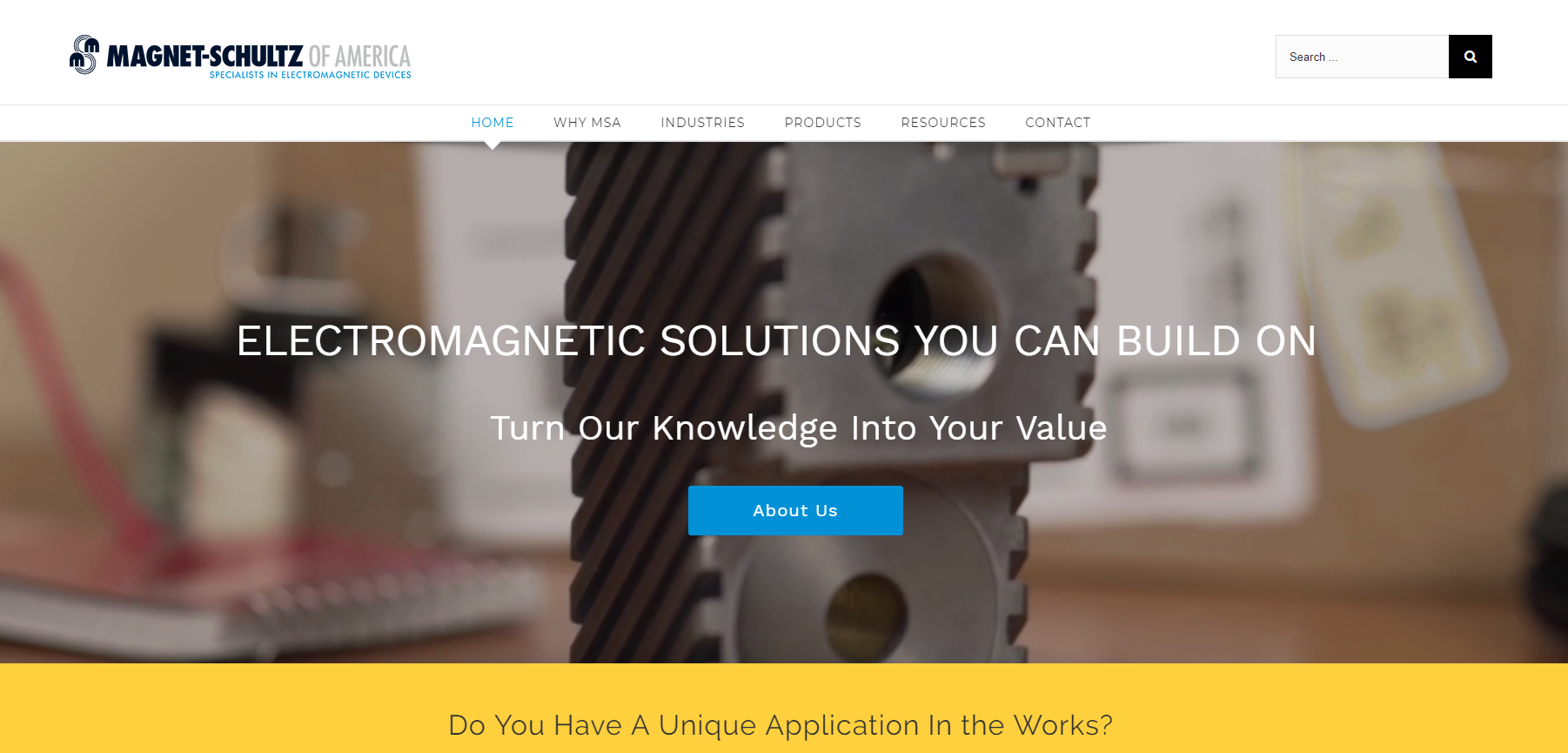Magnet Schultz of America (MSA) Explains Frozen Design Terms and Conditions
Lately, there has been a great deal of discussion defining Frozen Design and Frozen Process requirements. Terms and conditions on customer purchase orders are beginning to state that one, or both ”Frozen” scenarios must be part of the purchase agreement. The trouble is, these two terms can mean different things to different people, which can create a gap in understanding and may set the stage for disagreement.
There is a cost-to-benefit ratio related to defining and achieving the degree of “Frozen” that is desired. The following “Frozen Design” discussion, coupled with our companion article covering Frozen Process, are intended to help you understand the extremes of the “Frozen” spectrum, thereby empowering you to define the degree of Frozen that best suits your application and your budget.
Frozen Design (FD)
Typically, manufacturers provide three distinct categories of products:
- Reference Designs (Standard Products)
- Customized Reference Designs (CRD)
- Totally Custom Products
Because customer applications are unique, the majority of products often fall into the latter two categories so as to precisely meet customer requirements. Defining Frozen Design for electromagnetic device manufacturing, the following provides clarification for these three categories:
1. Reference Designs (Standard Products)
Reference designs are typically not frozen. Although these designs do not often require change, when it becomes necessary to do so, changes are made without formal notification to customers.
2. Customized Reference Designs (CRD)
Customized Reference Designs are based on, therefore include, common components from the reference design on which they are based. To precisely meet special customer requirements, the final assembly also incorporates customized and/or fully custom components.
Once a CRD sample has been approved by a customer, a unique part number is assigned to the manufacturer’s end product. Such part numbers signal the necessity for special consideration when either common or custom component design changes must be made.
Common Component Changes
When common component design changes do not affect the form, fit or function of the CRD end product, the CRD is not considered frozen, and such changes may be made without formal customer notification.
Common, Customized and Fully Custom Component Changes
If there is any chance that either fit or performance could be impacted by updates made to common components, and whenever changes are required for any customized or totally custom components, the design is considered frozen.
Before changing anything, the manufacturer will notify the customer, discuss the genesis of the change, and determine the best course of action to ensure fulfillment of the customer’s requirements.
3. Totally Custom Products
Once samples of totally custom products have been provided to and approved by the customer, the manufacturer will consider the design to be frozen. This means dimensions, tolerances, features, and specifications will not be changed without first notifying the customer, discussing the need for change, providing design alternatives, and gaining customer approval to proceed.
Useful and Necessary Reasons to Change Frozen Designs
Circumstances beyond anyone’s control, including both planned improvements and unplanned/unavoidable occurrences, can encourage a change to be made to Frozen Designs.
1. Obsolescence and Government Mandates
Changes to Frozen Designs can be driven by:
- Obsolescence of raw materials and purchased components
- Loss of a supplier for a particular component, material or outside process
- Changes in governmental mandates related to allowable materials (i.e. RoHS and REACH), and geopolitical restrictions on sources of materials (i.e. Conflict Minerals)
Whenever such issues arise, manufacturers immediately notify the customer, discuss options, and select the path that best suits the customer’s needs.
2. Unexpected Cost Increases
World commodity markets can suddenly and unexpectedly increase the cost of raw materials (i.e. copper, and rare-earth permanent magnets), which may negatively impact the cost of purchased components and outside processes. Such changes have a commensurate impact on the selling price of end products. Whenever this occurs, manufacturers notify the customer so that, together, they can explore the various options that will continue to meet the customer’s technical and commercial needs.
3. Beneficial Design Changes
Planned change can often provide a beneficial, valid reason to thaw a Frozen Design. Continuous improvements related to quality, performance, opportunities for cost reductions, or any combination of these are all positive reasons to explore making a design change.
Whenever such opportunities are presented, the customer makes the final decision whether, or not, to take advantage of the improvements.
The Path to Frozen Design Realization
Very early in the design phase of every project, defining the appropriate level of Frozen Design must be a collaborative effort between the customer and the manufacturer. Only when design guidelines and goals are clearly established can the correct design characteristics and relevant manufacturing processes be selected, thereby achieving the desired technical and commercial results. Visit our website to learn more about MSA’s Frozen policies.
As a leading manufacturer of standard and specialty Solenoids for hazardous locations, Electromagnetic devices—Electrohydraulic and Electromechanical—MSA provides advanced engineering, innovative design and lean manufacturing capabilities to our customers that simply outperforms the competition. If you’d like to discuss the various degrees and limits of the “Frozen” concept that will bring the value you seek to your project, Contact MSA Today.







Leave A Comment